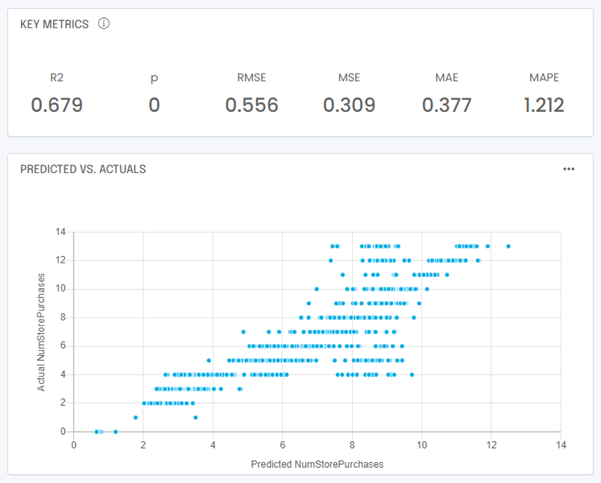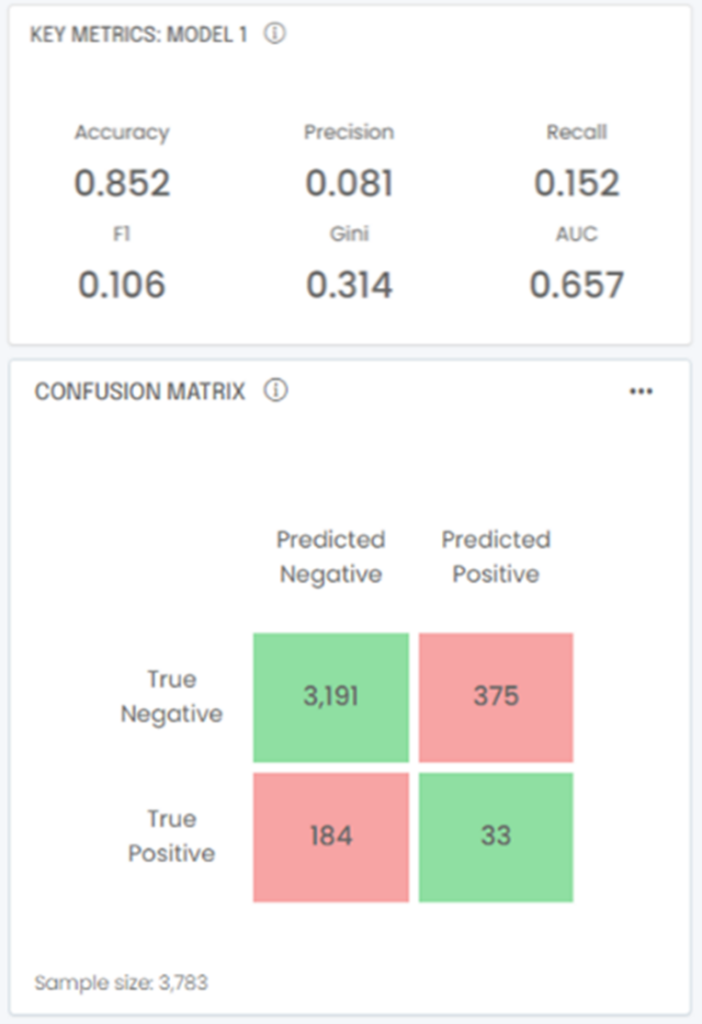
TLDR: Machine learning will help you improve your conversion rates by up to 6x and ability plan resources by typically 25 to 30%. If you are in a hurry and just want to look at the benchmark comparisons, go here for propensity benchmarks and here for regression benchmarks. Once you’re ready you can also check out how to build effective machine learning models here.
Marketers and sales professionals often ask us, “what is machine learning?” The short answer is that machine learning is a better prediction technology, and better predictions yield more effective prospect targeting, and more efficient use of sales and marketing resources. This post explains what machine learning is in depth, including how it works and the array of potential benefits for your business. Let’s dig in!
Machine learning: A practical definition
Machine learning refers to the ability of a machine to imitate intelligent human behavior; to learn and adapt without following explicit instructions by using algorithms and statistical models to analyze and draw inferences [1].
If statistics were developed with humans in mind before computers were invented, then machine learning is modern statistics developed with machines in mind. Traditional analytical methods combine a set of rules with data to produce answers. Machine learning combines data with known answers to come up with rules. The machine comes up with the rules during the training process.
There are three types of machine learning:
- Supervised learning. This is the type of machine learning described above. For example, you know who purchased your products and you have a lot of data about your customers, so you have the data and the answers. You can apply a machine learning algorithm to figure out the rules that predict who will buy in the future, and what they will buy. Marketers will recognize this task as propensity modeling, and machine learning typically does a much better job at it than traditional rules-based techniques. Sales and marketing applications of supervised learning include classification tasks, such as propensity modeling (who will buy, who will leave), and regression tasks, such as forecasting and driver analysis (what will my sold revenue be, and why).
- Unsupervised learning. You may not always have the answers you need for supervised learning, and that’s where unsupervised learning comes in. When using unsupervised learning you are not providing any upfront answers for training purposes as with supervised learning, you are simply letting the machine learning algorithm identify patterns in the data without any initial guidance. For example, in market segmentation, you may be looking at your addressable market and trying to figure out how to segment your prospects. In this case you will apply a range of clustering techniques to identify natural groupings among prospects and customers. If you have a lot of unstructured data, or records with many attributes, other use cases include dimensionality reduction, which is useful to discover patterns and process larger datasets.
- Reinforcement learning. This type of machine learning deals with closed-loop systems that constantly learn and automatically act on learnings. It is used mostly in robotics, video games, and other uses cases where a human is not needed in the loop. Other than for recommender systems, reinforcement learning is not used very often in sales and marketing applications. It is rarely used in B2B applications, which usually require a human in the loop to review and validate allocation of resources.
A better technology: The regression use case
How is machine learning a better technology for marketers? Consider this example. Assume you want to predict the number of purchases per customer at the prospect level, so you can better target and serve high-volume prospects. This example uses a publicly available marketing campaign dataset of about 2,000 prospects and their purchase history. Below are linear regression results in Figure 1 (the traditional approach) and random forest regression results in Figure 2 (the machine learning approach).


The linear regression model does a decent job of predicting the number of in-store purchase with an R2 of 54%. That’s a good start. Using a random forest algorithm on the same dataset, we improve accuracy by about 25%. This means we can do a 25% better job of planning the effect of our media mix, improve our inventory planning by 25%, etc.
A better technology: The propensity use case
Now let’s look at a CRM example for a B2B service provider. Our goal here is to identify which prospect accounts will yield a closed-won deal or not. Below are actual benchmark results for propensity scoring using a traditional method in Figure 3 (logistic regression classifier). Because so many accounts yield nothing, the accuracy score appears high but is not meaningful, just as a broken clock will be correct twice a day.


The F1 score is a better performance proxy to gauge how the model is doing… In Figure 3 the traditional algorithm shows an F1 score of 0.106. It is right about 10% of the time (i.e., only about 10% of the predicted positive or the true positives are predicted correctly). This won’t buy you much credibility with your sales team – they will figure out quickly that about 90% of the prospects you identify as being high likelihood do not produce any sale. Take a look at the confusion matrix too. It’s a good way to visualize, using a test dataset, how good the algorithm is and how many false positives and false negatives it produces.
How much better is the machine learning benchmark? In Figure 4 we show results for an XGBoost classifier. Here the F1 score is 0.588, meaning about 60% of the predicted positives, or the true positives, are predicted correctly. This is a 6x improvement over the traditional method. This example will translate into a 6x improvement in account conversion rates, meaning you will generate 6x the volume of closed won deals with the same list of prospects, because you will know where to target your sales and marketing efforts with much greater effectiveness. In addition, your unit costs will decrease dramatically as a result of being far better targeted.
Other marketing analytics use cases
Beyond the account targeting and sales forecasting examples above, machine learning allows marketers to be far more effective across a number of use cases, such as:
- Segmentation. Gone are the days of slow, manual segmentation studies that would be performed once a year, at best. Clustering techniques such as K-Means, PCA, DBSCAN, and others allow us to segment customers and prospects in near real-time and identify micro-patterns invisible to the human analyst. We can now identify profitable segments and trends as soon as they emerge, and take advantage before our competitors do.
- Price optimization. Techniques such as LASSO, combined with any number of scoring algorithms, allow us to develop customer-level demand models at scale, which enable customer-level pricing. Think airlines or Amazon targeting individual customers with individualized pricing. If implementation considerations are an issue, this can support segmented pricing instead. Either way, a more granular view of pricing, when supported by the proper operational systems and processes, can lead to significant revenue and bottom-line growth.
- Voice of the customer. Natural language processing (NLP) algorithms can mine your customer reviews, calls, emails, and texts using sentiment analysis, and score them in real time to give you an objective, quantified view of what your customers are saying about you, what topics they bring up, and how positive or negative they are.
- Next-best-action recommendations. Next-best-action (NBA) or recommender systems are primary applications of machine learning to customer management. When calibrated and maintained properly, they are great at consistently targeting customers with higher close rate offers that keep customers happy and coming back.
- Customer churn prevention. Just as machine learning can deliver better prospect propensity scoring, it can also deliver better churn propensity scoring. Following a number of themes we’ve already explored, it can do so faster and at a more granular level, which in turn enables better targeted retention actions.
Notes
[1] Oxford English Dictionary (2022)
How can we help?
Do you need better predictive analytics? Want to learn more? Check out how to build effective machine learning models here. Find out more at https://analyzr.ai or contact us below!






